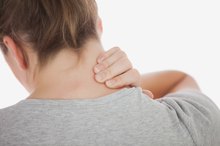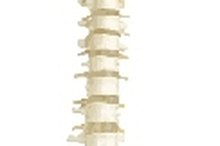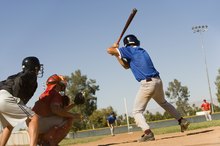Lower Back Arthritis Symptoms
Lower back arthritis–sometimes called lumbar spine arthritis or lumbar facet joint arthritis–causes pain and stiffness in the joints (called facet joints) of the lower back and inflammation of the surrounding tissues 12. Normally the lumbar joints are cushioned by gel-filled discs and protected by an outer covering of cartilage; however, arthritis can cause cartilage to wear down and discs to erode, leading to friction, irritation, decreased flexibility and pain in the lower back region.
If you are experiencing serious medical symptoms, seek emergency treatment immediately.
Read more about the four stages of arthritis.
Joint Pain and Inflammation
Lower back arthritis is characterized by lower back or pelvic pain caused by inflammation in the lumbar facet joints 1. It may also be associated with a dull ache that extends downward to one or both buttocks; however, the pain rarely goes below the knee or down the front of the leg as it often can in the case of pain caused by a herniated disc. Many people will experience tenderness over the area of the inflamed lumbar facet joints.
Stiffness and Loss of Flexibility
Things that Make Degenerative Disc Disease Worse
Learn More
Inflammation of the spinal joints in the lower back can cause them to become somewhat less flexible. Bending sideways or hyperextending the back in a backwards motion can be difficult and painful as it puts increased pressure on the lower back joints. Bending forward is usually less painful, although people may still experience noticeable loss in flexibility. After resting or sleeping or periods of inactivity, the back joints can become particularly stiff, and stiffness can worsen symptoms of pain and reduced mobility.
Arthritis is a degenerative condition that can lead to a spinal condition called Degenerative Disc Disease (DDD), or spondylosis, in which the gel-filled discs between each vertebra in the lumbar region start to dry up, losing their flexibility and ability to cushion the spine. Those with DDD may find the sitting position to be the most painful because it puts the most pressure on the lower back joints. Lying down and even walking or running can sometimes help to improve symptoms of pain and stiffness.
- Inflammation of the spinal joints in the lower back can cause them to become somewhat less flexible.
- After resting or sleeping or periods of inactivity, the back joints can become particularly stiff, and stiffness can worsen symptoms of pain and reduced mobility.
Nerve Pain
Lower back arthritis usually only causes mechanical pain, or pain that results from abnormal movement of the spine. However, arthritis can sometimes cause bone spurs (bony projections) to form at the edges of the lumbar joints. These bone spurs cause a narrowing of the spinal canal, resulting in a condition called spinal stenosis in which pressure is put on the spinal cord and nerves that branch out from the compressed section of the lower spine. This nerve compression causes the nerve root to become inflamed and irritated, prompting it to submit signals wherever the nerve travels. Spinal stenosis is most commonly caused by osteoarthritis and can result in symptoms such as:
- cramping
- numbness
- tingling in the buttocks
- thighs or legs
- slowed reflexes
- muscle weakness or a problem with bladder or bowel functioning
- Lower back arthritis usually only causes mechanical pain, or pain that results from abnormal movement of the spine.
- However, arthritis can sometimes cause bone spurs (bony projections) to form at the edges of the lumbar joints.
Related Articles
References
- Orthogate: Lumbar Facet Joint Arthritis
- Spine Health: Symptoms of Facet Joint Problems
- Mayfield Clinic: DDD
- Seidler A, Bolm-audorff U, Heiskel H, et al. The role of cumulative physical work load in lumbar spine disease: risk factors for lumbar osteochondrosis and spondylosis associated with chronic complaints. Occup Environ Med. 2001;58(11):735-46. doi:10.1136/oem.58.11.735
- Goode AP, Carey TS, Jordan JM. Low back pain and lumbar spine osteoarthritis: how are they related?. Curr Rheumatol Rep. 2013;15(2):305. doi:10.1007/s11926-012-0305-z
- Chang, H.; Lynm, C.; and Glass, L. Osteoarthritis of the Lumbar Spine. JAMA.2010;304(1):114. DOI: 10.1001/jama.304.1.114.
Writer Bio
Based in New York City, Tricia Mangan began her writing career in 2001. She has co-authored a National Cancer Institute report and a number of research articles that have appeared in medical journals. Tricia holds a Master of Arts in clinical psychology from Stony Brook University and boasts diverse clinical, research and teaching experience.









